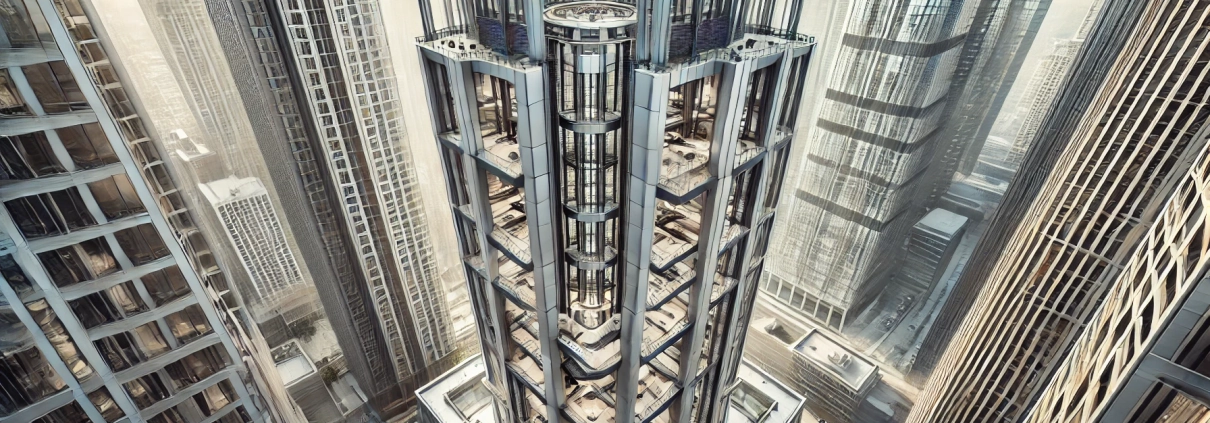Core – (structural)
A vertical space in a multi-story building that commonly houses the elevators, stairwells, space for vertical MEP distribution, janitorial closets, and restrooms. It is common for buildings to have the core space in the center of the building, but the design and development team may sometimes elect to create a side core for various reasons such as if a central core would create inefficient floor plates that would not compete with the market.
Putting ‘Core – (structural)’ in Context
Scenario:
Skyline Investment Partners, a real estate investment firm specializing in core acquisition investments, is evaluating the purchase of a Class A office building in the heart of Chicago’s Central Business District (CBD). The property, known as The Monroe Tower, is a 45-story skyscraper with a total rentable area of 900,000 square feet. Built in the mid-2000s, The Monroe Tower is considered one of the premier office spaces in the city, with high-quality finishes, modern amenities, and a prime location.
The Building Core:
The Monroe Tower features a central core design, which is a common structural choice for high-rise office buildings in dense urban environments. This central core houses essential building systems, including 12 high-speed elevators, two stairwells, and vertical shafts for mechanical, electrical, and plumbing (MEP) distribution. Additionally, the core contains restrooms and janitorial closets on each floor, as well as space for telecommunications and emergency systems.
The central placement of the core provides several advantages. First, it allows for efficient vertical circulation, ensuring that tenants and visitors can move quickly between floors. Second, it maximizes the amount of leasable floor area on each level by pushing the core functions into a centralized location, thereby creating large, unobstructed floor plates that are attractive to tenants. This is particularly important in a competitive office market like Chicago’s CBD, where tenants often seek flexible, open layouts that can accommodate a variety of uses.
Investment Considerations:
As the Acquisition Manager at Skyline Investment Partners, you recognize that the building’s core design is a key factor in its appeal to potential tenants. The efficient layout made possible by the central core enhances the building’s marketability, contributing to its high occupancy rate of 95% and strong tenant retention. Moreover, the building’s core supports the use of modern HVAC systems and allows for easy maintenance and upgrades, which are crucial for sustaining the property’s Class A status over time.
When assessing the potential acquisition of The Monroe Tower, the central core design also plays a role in your financial modeling. The efficiency of the floor plates, due to the core’s placement, translates to higher leasable square footage and, consequently, greater rental income potential. Additionally, the core’s robust infrastructure minimizes the need for significant capital expenditures in the near term, which aligns well with the low-risk profile of Skyline’s core investment strategy.
In summary, The Monroe Tower’s central core is a vital component of its structural integrity and operational efficiency. It not only supports the building’s functionality but also enhances its desirability in the marketplace, making it a sound investment for a firm like Skyline Investment Partners.
Click here to get this CRE Glossary in an eBook (PDF) format.

